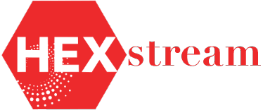Water Affordability 101
“From overwhelmed sewers in Houston to leaking pipes in Chicago to water main breaks in Boston, the scale is national, and the challenge is growing. Local water utilities face billions of dollars in costs to replace pipes, upgrade plants, and address other failures in their systems, all while dealing with increasingly extreme storms and mounting concerns regarding water quality and quantity.” –Brookings Institute Blog
Affordable access to clean, safe water is a fundamental requirement of human well-being. We depend on water not only to drink, but to cook, bathe, sanitize, and clean our homes. And an inadequate or inaccessible (physically or financially) supply can create substantial risks to human welfare.
In this blog, we provide an overview of water accessibility, including some key terms, facts, and figures. We conclude with a brief look at how data will play a crucial role in helping US utilities improve water affordability.
What is water affordability? Water Access versus Water Affordability
Specific barriers to water access vary widely across the globe, and it is helpful to recognize the distinction between water access and water affordability.
- Water access refers to physical access to water. Limiting factors may include dry climate, inadequate infrastructure, or water that is unsafe to drink.
- Water affordability refers to situations where there is an adequate physical quantity of water, but rates are too high for some households, creating an inequitable financial burden.
Across the globe, both water access and affordability are significant issues. According to the CDC, two billion people lack access to safely managed drinking water at home. Of these, 1.2 billion lack any basic drinking water service. Water access is starkly divergent between urban and rural areas globally: 8 out of 10 people who lack basic drinking water live in rural areas. An even larger group (3.6 billion) lack access to water for sanitation in the home.
In the United States, the prevalence of highly developed urban areas means affordability issues are more widespread than physical access problems. That said, water access is still an issue in the US. Research suggests that about 1.1 million people lack a secure water supply in the US. Some of these issues have roots in specific rural geographies (Navajo Nation provides an instructive example). But an estimated 73% of households lacking access do live in cities, including 47% located in the largest 50 metropolitan areas in the country. These issues are associated with substantial social inequities. For example, people of color are almost 35% more likely to lack piped water.
Water Affordability in the United States
Even in geographies where water is plentiful, many households struggle with the financial burden of their water bill. According to research published in Water Resources Research, the cost of water is rising three times faster than inflation in the United States. For about one-in-seven households, total expenditure on water exceeds 4.5% of income (a common rule of thumb for water affordability).
According to Circle of Blue, a water affordability advocacy organization, the average household water bill has increased by 50% since 2010.
What is driving these rate increases?
In a recent discussion with HEXstream, AccessH2O co-founder and Executive Director Maria DeChellis explained that “in many cases, today’s customers are paying for governance failures from decades past. For years, many localities allocated water payments to general revenue—causing much of it to be spent on pet projects instead of re-invested in water infrastructure. Now, customers are paying the price for longstanding underinvestment in water infrastructure.” Pandemic-related shut-off moratoriums provided households with temporary relief, but as these programs end, many households find themselves with a year or more of past-due balances.
How can data help? HEXstream’s Partnership with AccessH2O
HEXstream has delivered analytics solutions for some of the largest utilities in North America, and we are excited to bring our passion and expertise to the challenges of water affordability. In the past, we have written about how utility analytics can help drive a quality customer experience, and nothing is more fundamental to this experience than basic affordability. Just like power, water service is critical to not just customer satisfaction, but customer well-being.
As water utilities across the United States work to improve water affordability, the expanded use of data will be vital to key tasks such as proactively identifying customers experiencing affordability issues. The earlier that an issue is detected, the more options are open for constructive mitigation—such as proactively encouraging enrollment in a lifeline low-rate program rather than risking reduced access.
We are excited to announce that HEXstream will be partnering with AccessH2O to help further their vision of “a future where safe and reliable water service is never compromised over an individual's financial circumstance.” AccessH2O is at the forefront of nationwide efforts to improve water affordability, and we could not be more proud to partner with their team. You can learn more about their group on their official website here.
We hope this blog has provided a helpful high-level overview of water access and affordability issues in the US and beyond. We look forward to exploring the relationship of data analytics to this topic in greater depth throughout the year.
Let's get your data streamlined today!
Other Blogs
A New Imperative for Utilities to Manage their Unbilled Revenue
“While regulators generally allow utilities to recover prudently incurred costs from ratepayers, utilities are always cognizant of the effect rising c
Five Keys to Keeping Your Cloud Optimized
The cloud can deliver extraordinary flexibility, scalability, and performance, which is why so many utilities are flying to the cloud. But while the c
Why Utilities Need to Embrace Modern Technologies to Improve Cloud Adoption
Utilities have begun adopting cloud-based capabilities across a cluster of key business functions such as customer experience, asset management, and r
